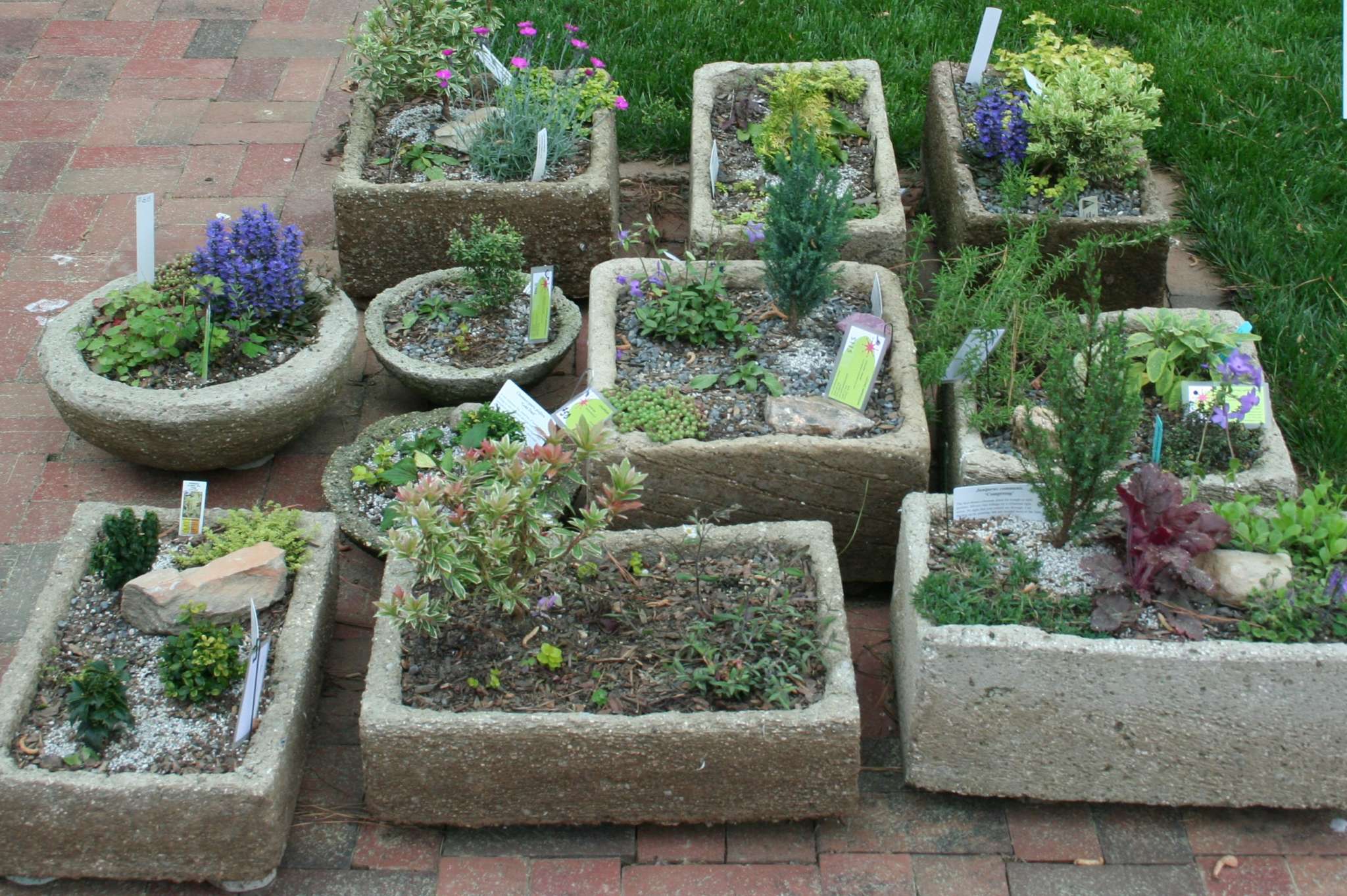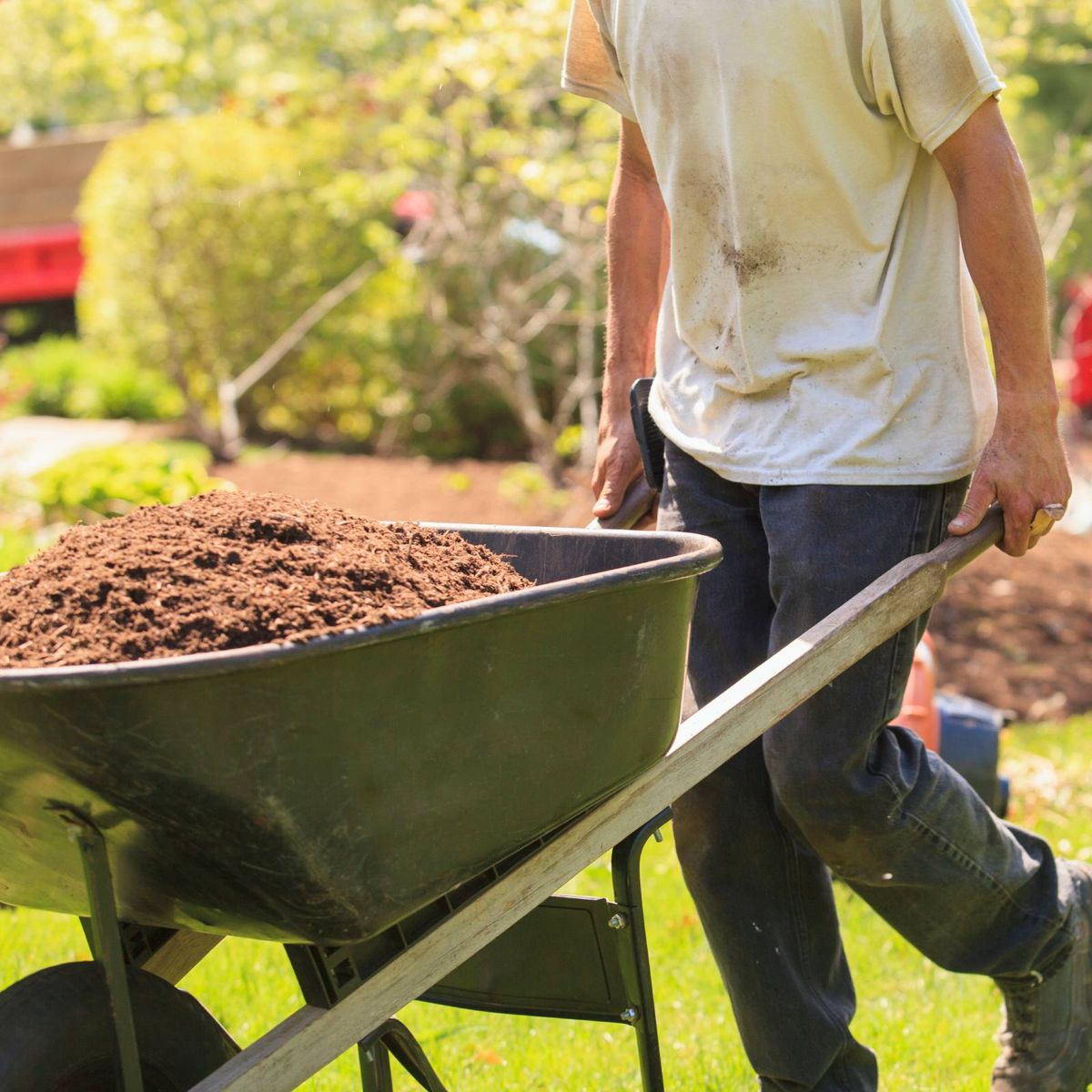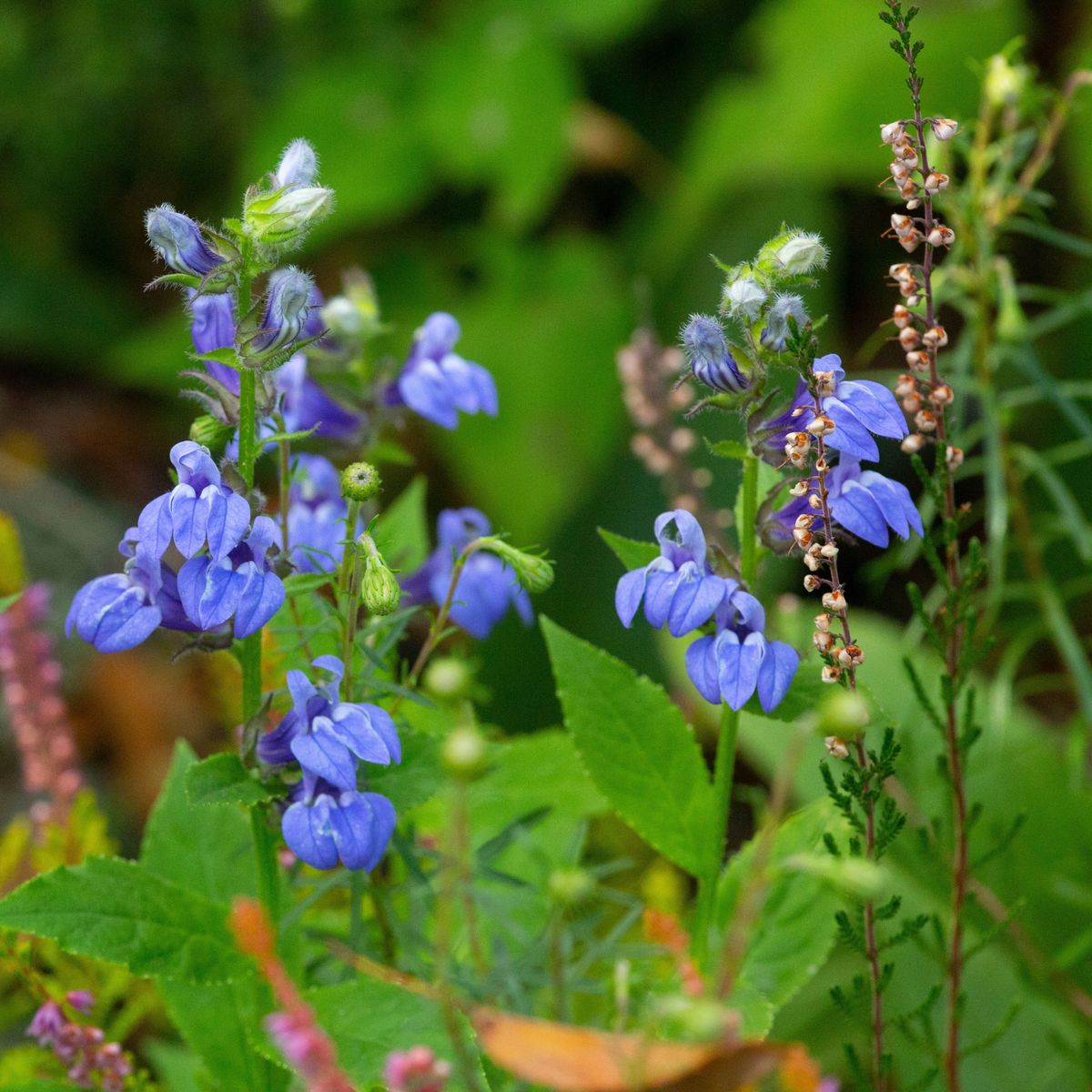Hypertufa is a cast “rock-like” material which can be used for relatively inexpensive bonsai pots and slabs for plantings. It looks like rock, can be cast into almost any shape, is very lightweight and also strong enough to withstand the freeze/thaw cycle of most northern climates. The American Rock Garden Society uses the following basic recipe to create alpine troughs. They can be textured anywhere from very smooth to a rough rocky look for a “natural pot”.
Recommend visiting http://hypertufamolds.net/ for additional ideas for Hypertufa
Ingredients:
- Cement
- Dry Portland cement
- Sand
- Builder’s sand, traction sand, “sandbox” sand; can have relatively large stone particles mixed in (in fact, adds to the texture!)
- Peat
- Peat moss, sifted to remove larger lumps and foreign objects
- Perlite
- “Normal” garden variety perlite, sifted to remove larger lumps.
- Vermiculite
- Pure vermiculite. Many seed starters also contain some kind of compost and/or peat mixed in. This will not work!
- Fibermesh
- “Shredded” fiberglass fibers (to add strength)
- Concrete Dye (optional)
All of the following mixtures are used the same way. Mix all of the dry ingredients well, and then slowly add water until you get a thick “mud pie” texture. Shape (pour into a mold) and let cure. Curing can take 1 to 2 months! Molds can be made several ways. One which I think would be fairly easy would be to make an inverted “bowl” shape in sand, and then line the sand with plastic (like a heavy garbage bag). After putting the wet hypertufa into the mold, cover it with the plastic and let it cure covered for a few days. Then uncover it for the remaining cure time. After it cures, you can rough it up with a wire brush, or cut it with a saw. Add drainholes as required using a screw driver or drill. If you want a rough finish, you may need to “melt” any exposed fiberglass using a propane torch or a candle.
Blends
BASIC
1 part cement, 1 part sand, 2 parts peat
VARIATION 1
1 part cement, 1.5 parts sand, 1.5 parts peat
I personally have not used any of these mixtures, although I did see a demonstration of this in October of 1993, and I saw the cured slabs in November of 1993. Keep in mind that the finer the mixture, the smoother the texture of the finished product.
Hypertufa by Mike Bartolone











